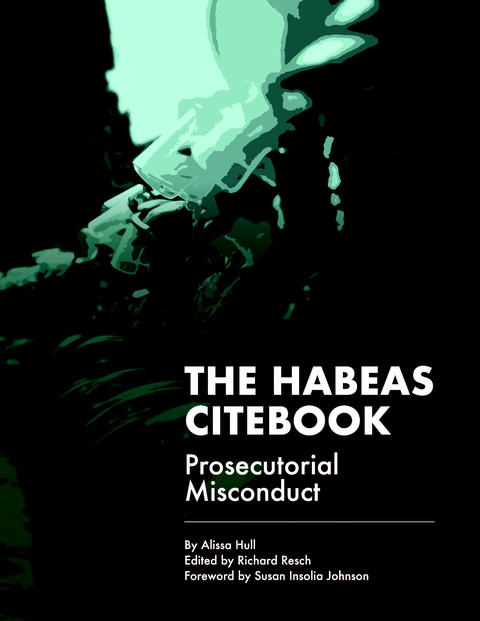Crushing Whistleblowers
A Closer Look at How Police Departments Resist Reform From Within Their Ranks
by Jayson Hawkins
The last few years have seen a growing awareness of systemic problems in the way American police operate. Efforts to reform the system have been stymied by a number of factors, including the racial and political rhetoric that surrounds the issue, fear mongering by defenders of the status quo, and the remarkably short attention span of the American public. An additional problem that rarely gets the attention it deserves is the resistance to reform found among police themselves. This resistance manifests itself in a variety of ways, but one of the most common is in suppressing awareness of police misconduct by punishing police officers who blow the whistle on their colleagues.
It is difficult to calculate the extent of retaliation whistleblowers face, but a recent investigative report released by USA Today offers insight into the scope of what critics call a “blue wall of silence.” Reporters compiled a catalogue of more than 300 examples of incidents over the last 10 years by sending out over 400 records requests to federal, state, and local agencies. Dozens of agencies fought or refused to release records, but despite resistance, an astonishing portrait of retaliation emerged from the investigation.
The pattern that took shape was one of police officials unofficially condoning reprisals that cut across communities of race, gender, and seniority. The process can involve weaponizing internal affairs, compromising the anonymity of whistleblowers, and unions supporting accused officials while abandoning those who report them.
Moses Black of the Gonzales Police Department in Louisiana learned first-hand how effective this retaliation can be. In 2015, Black, a veteran officer, reported what he believed was excessive force used against a handcuffed prisoner by a patrol sergeant. An internal review board subsequently cleared the sergeant, mostly because two other officers backed his story, but after the incident, Black was suspended for 90 days for being late to work. Even though a city board overturned the suspension, Black was then fired for asking a neighbor about a seat belt ticket she had received from another officer.
The city police chief denied it was retaliation, and since a judge threw out Black’s lawsuit against the department, he has failed to land a job at any other agency in Louisiana. “Since all this happened,” Black said in an interview, “my life has just been sh*t.”
The story of Moses Black is neither uncommon nor a purely recent phenomenon. “It goes to the core of what’s wrong with American policing,” says Jeffrey Schwartz, who has studied hundreds of police departments over his 40-year career as a consultant, and Justin Hanford, a law professor at Howard University, sees these cover ups as part of “police culture.”
The failures of repeated efforts to reform these practices offers convincing testimony to how entrenched the problems are. During Prohibition, President Herbert Hoover created a commission to investigate the seeming inability of police to stop the violence surrounding illegal alcohol sales. One of the problems the commission found was that police agencies valued loyalty over effectiveness. One of the commissioners concluded, “It is unwritten law in police departments that police officers must never testify against their brother officers.”
Policing got extensive public attention again after a New York patrolman named Frank Serpico exposed widespread corruption and had his story turned into a movie starring Al Pacino. The city subsequently formed the Knapp Commission to investigate police corruption, but the process was repeatedly compromised by what one veteran police captain called “a code of silence that is greater than the omerta of the underworld.”
Despite adopting many of the Knapp Commission recommendations, a new commission in 1994 found the same problems persisted in New York. Whistleblowers or persistent internal affairs investigators had their lockers burned or tires slashed. The 1994 Mallen Commission concluded, “If the department ever hopes to make lasting improvements in corruption control, it must do something it has failed to do in recent history: acknowledge the code of silence exists and take steps to overcome it.”
This code of silence is not exclusively a New York phenomenon, or even just a big city problem. Mike Erwine ran into it while working in a jail in Churchill County, Nevada. When he reported misconduct to a supervisor, including abuse of prisoners at the jail, a sergeant asked him, “Oh, Jesus Christ, Erwine, why don’t you just hug them all? They’re inmates, for Christ’s sake!”
Erwine’s attempts to report the misconduct were repeatedly rebuffed or met with overt threats of retaliation. Finally, when Erwine tried to send a written report directly to jail administrators, he was fired for launching an unauthorized investigation and going outside the chain of command.
No other police agency in Nevada will hire him, and he has filed a lawsuit against his old department. His former bosses claim that Erwine was fired for a series of policy violations and that they had investigated his reports of misconduct, but they could produce no documents to support either claim. Erwine’s reward for trying to do the right thing was a premature end to his career in law enforcement.
Ordinarily, police unions go to great lengths to protect the careers of their members, including negotiating contract clauses that can be used to shield officers accused of misconduct or to make it harder for other officers to expose it. In Minnesota, officers facing investigation get to know the identity of witnesses before hearings. Chicago cops can view incriminating footage and change their official statements without facing penalties. But when an officer tries to report misconduct, union support evaporates.
Los Angeles County Deputy Art Gonzalez reported an assault by a fellow officer, and within days, he was identified as the informant and shuffled to an inferior job. The union offered him no assistance when he complained, nor did they help him in the subsequent lawsuit. Gonzales’s attorney Alan Romero said that the union has offered no help to the more than 20 whistleblowers he has represented.
Los Angeles has a long history of punishing officers who break the code of silence. When the city launched a large-scale investigation into police misconduct after the Rodney King beating, the commission discovered that fear of consequences was the single greatest barrier to creating more officer accountability. Two years later, a further investigation concluded that police in Los Angeles continued to allow police witnesses to cover up and lie without consequences.
Other cities have similar problems. Chicago lost a 2012 brutality case after a jury concluded there was a widespread practice of ignoring misconduct and enforcing a code of silence. In 2015, a King County Superior Court ruled against the Seattle Police Department for retaliating against a sergeant who reported misconduct. Similar cases have been reported in South Carolina, Florida, Texas, and Oregon.
Often the most potent weapon a department can use against a whistleblower is the internal disciplinary process designed to punish the misconduct being reported. In multiple cases reviewed for the USA Today report, journalists found that police departments warped the internal affairs process to pursue investigations against the whistleblowers or even over-zealous internal affairs regulators.
In a Maryland city near Washington, D.C., someone posted videos on YouTube showing officers threatening unarmed suspects with their guns, tasing and tackling a National Guardsman, and filming a naked man who was intoxicated. The outrage the release of the videos sparked was as much for their release as it was for their content, at least among police administrators. The only investigation opened by the department was into who released the footage. The anger even overflowed onto an officer who lawfully responded to an open records request for the USA Today report.
The officials who retaliate against whistleblowers rarely face consequences. The rare few who come under fire for their actions were either allowed to keep their jobs or retire with pensions in nearly all the cases documented by USA Today. The same norm almost certainly holds true for the countless cases the report was unable to document.
Not all whistleblowers are punished. In Del City, Oklahoma, the detective who testified against another policeman for shooting an unarmed man rose to the rank of major. The Perth Amboy, New Jersey, cop who testified against his chief landed the top job for himself. These isolated cases, when viewed against the norm, show both what is possible and the willful refusal of most departments to engage in meaningful reform.
The debate about how to reform police often centers on what action legislatures can take to “fix” the system, but too often, proponents of reform forget that others have tried before them and failed because of police recalcitrance. Until police themselves are invested in reform and embrace the rule of law among law enforcement, change will remain elusive.
Source: USA Today
As a digital subscriber to Criminal Legal News, you can access full text and downloads for this and other premium content.
Already a subscriber? Login





